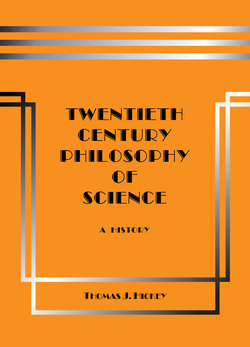Читать книгу Twentieth-Century Philosophy of Science: A History (Third Edition) - Thomas J. Hickey - Страница 100
На сайте Литреса книга снята с продажи.
4.20 Scientific Pluralism
ОглавлениеScientific pluralism is recognition of the coexistence of empirically adequate alternative explanations due to undecidability permitted by the empirical undetermination in test-design language.
All language is always empirically underdetermined by reality. Empirical underdetermination explains how two or more semantically alternative empirically adequate theories can have the same test-design language. This means that there are several theories yielding accurate predictions that are alternatives to one another, while having differences that are small enough to be within the range of the estimated measurement error. In such cases empirical underdetermination due to the current test design imposes undecidability on the choice among the alternative explanations.
Econometricians are accustomed to alternative empirically adequate econometric models. This occurs because measurement errors in aggregate social statistics are large in comparison to those in natural sciences. Each such model has different equation specifications, i.e., different causal variables, and makes different forecasts for some of the same prediction variables that are accurate within the relatively large range of estimated measurement error. And discovery systems with empirical test procedures routinely proliferate empirically adequate alternative theories for output. They produce what Einstein called “an embarrassment of riches”. Logically this multiplicity of alternative theories means that there may be alternative empirically warranted nontruth-functional hypothetical conditional statements in the form “For all A if A, then C” having alternative antecedents “A” and making different but empirically adequate predictions that are the empirically indistinguishable consequents “C”.
Empirical underdetermination is also manifested as conceptual vagueness. For example to develop his three laws of planetary motion Johannes Kepler, a heliocentrist, used the measurement observations of Mars that had been collected by Tycho Brahe, a type of geocentrist. Brahe had an awkward geocentric-heliocentric cosmology, in which the fixed earth is the center of the universe, the stars and the sun revolve around the earth, and the other planets revolve around the sun. But Kepler used Brahe’s astronomical measurement data, so measurement error was not the operative underdetermination permitting the alternative cosmologies. But Kepler was a convinced Copernican placing the sun at the center of the universe.
Kepler’s belief in the Copernican heliocentric cosmology made the semantic parts contributed by that heliocentric cosmology become for him component parts of the semantics of the language used for celestial observation, thus displacing Brahe’s complicated combined geocentric-heliocentric cosmology’s semantical contribution. Then hypothesizing with the simpler Copernican heliocentrism’s clarifying contributions to the observational celestial semantics, he developed his three laws after deciding that the orbit is elliptical.
Alternative empirically adequate theories due to empirical underdetermination are all more or less true. An answer as to which theory is truer must await further development of additional observational information or measurements that clarify the empirically inadequate test-design concepts. But there is never any ideal test design with “complete” information, i.e., with no vagueness or no measurement error. Pragmatist recognition of possible undecidability among alternative empirically adequate scientific explanations due to unavoidable empirical underdetermination is called the thesis of “scientific pluralism”.
